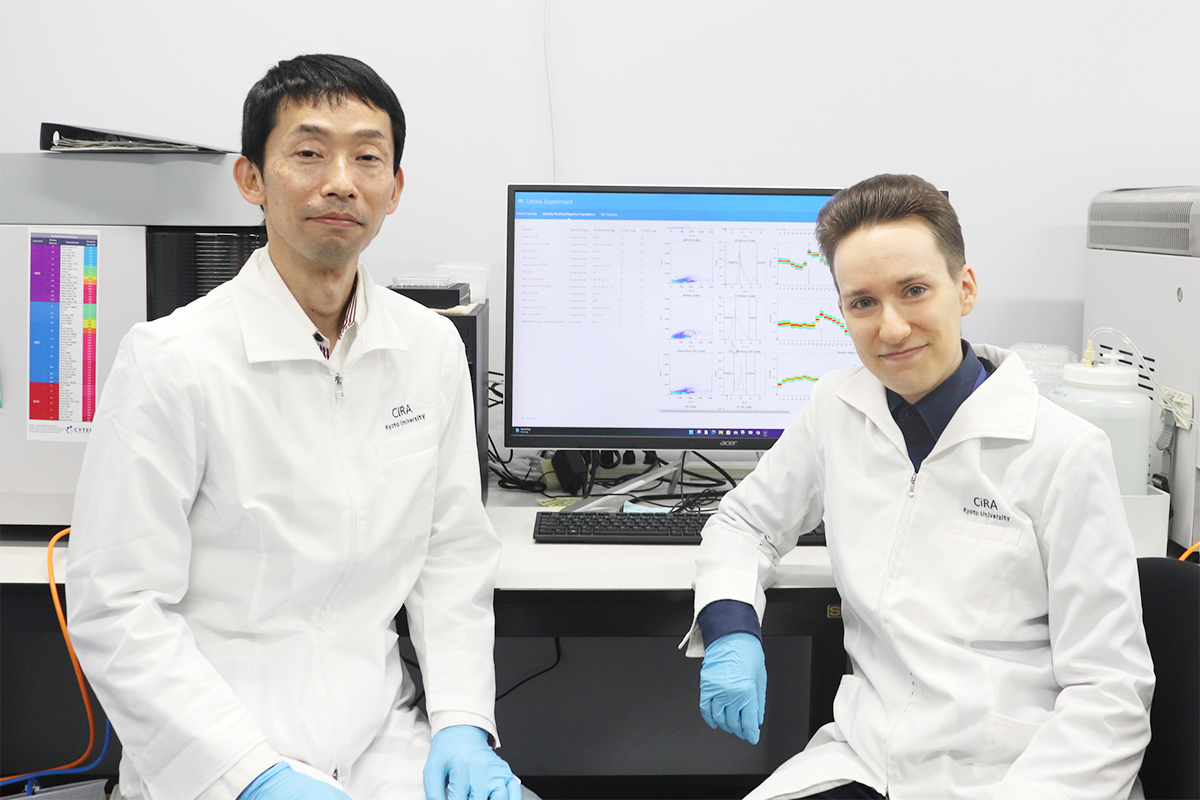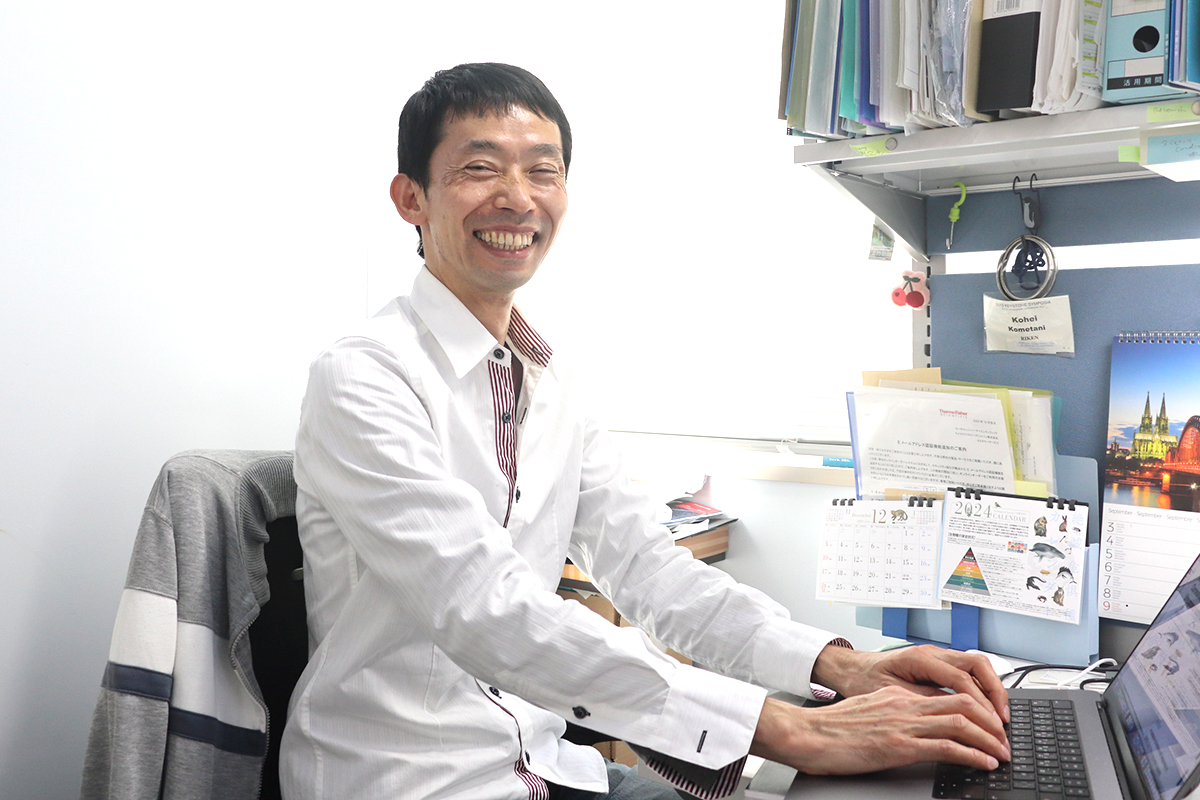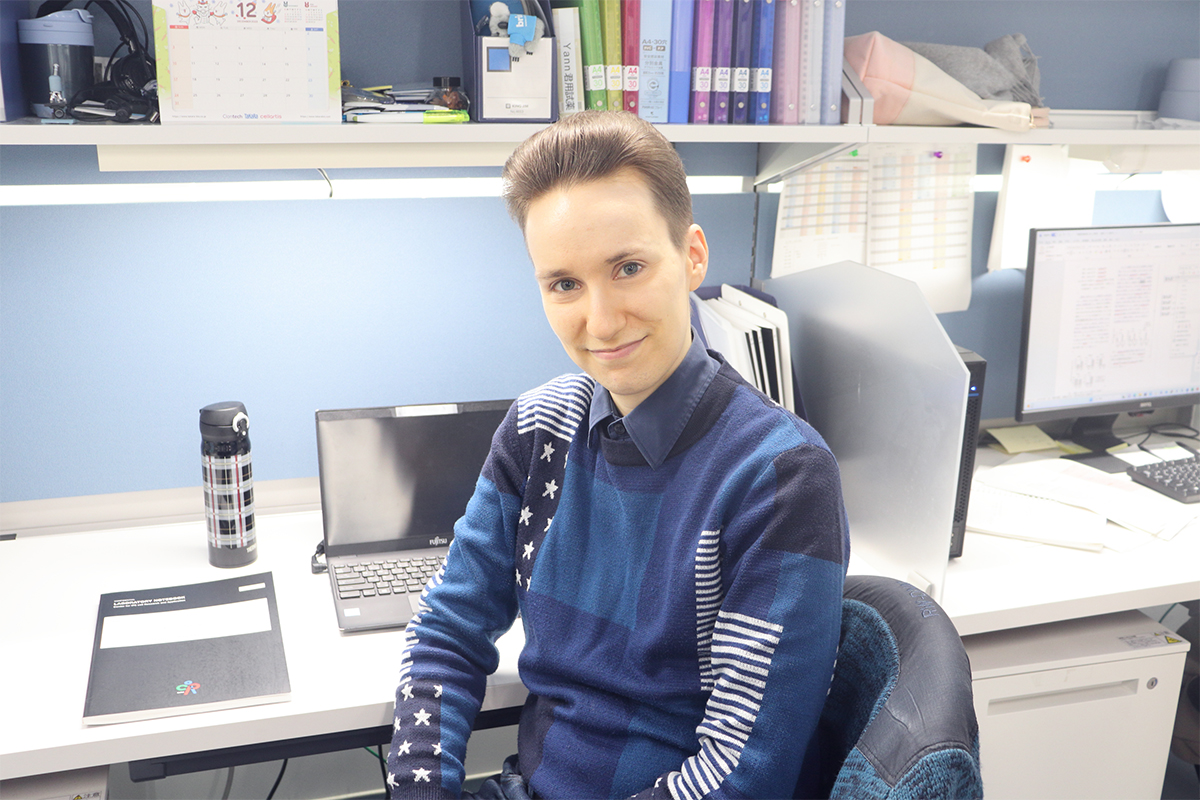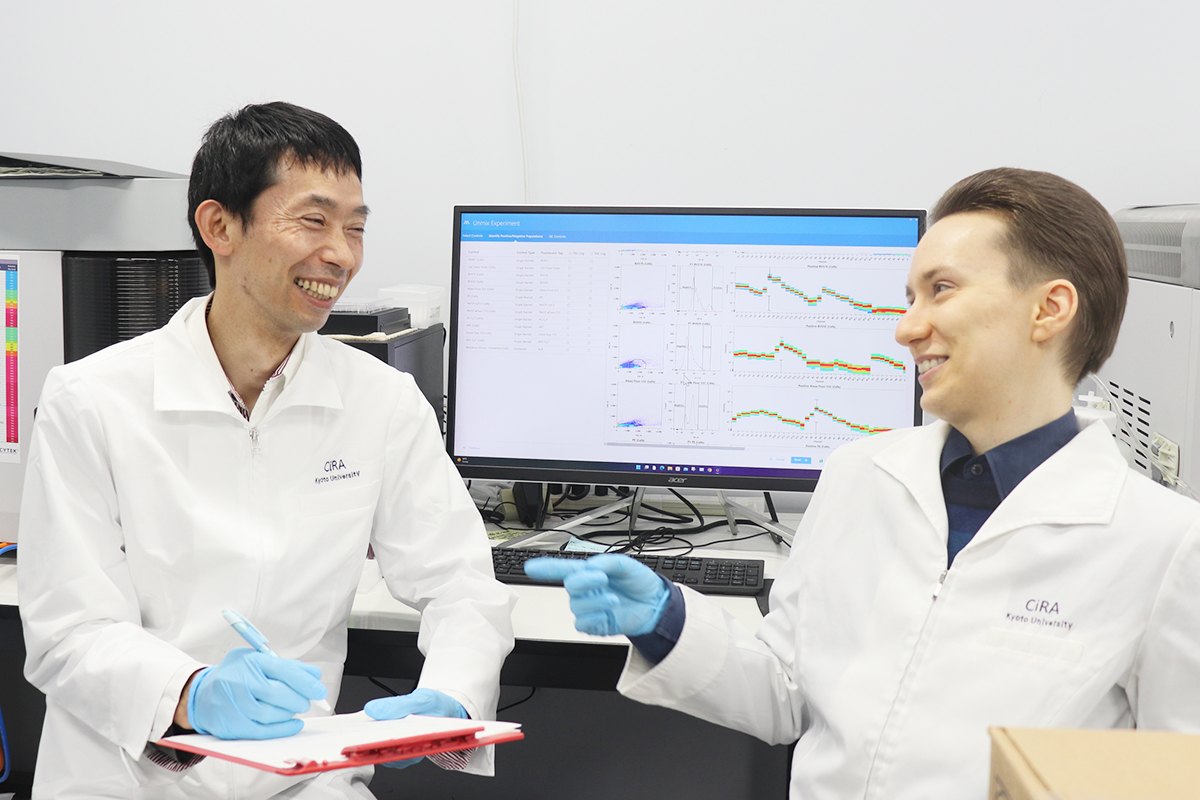
CiRA Reporter
CiRA Reporter

People
January 11, 2024
Leveraging Their Collective Willpower to Pioneer the Future of Immunological and Thymus Research

(From left) Kohei Kometani
and Yann Pretemer
When Kometani first joined CiRA, the Hamazaki Laboratory had yet to use iPS cells for research, so he had to start everything from scratch. However, he was not anxious or worried, saying, "I can learn many things, so I always want to try something new." His curiosity and attitude toward tackling new challenges kept him motivated. Kometani recalled, "There were probably things I could have done better, but I also enjoyed the process of trial and error."

Originally from Luxembourg, Pretemer was fascinated by iPS cells and came to Japan after seeing Professor Shinya Yamanaka win the Nobel Prize in Physiology or Medicine in 2012. "I have always admired his selflessness and eagerness to contribute to society," he said. This general Japanese attitude toward research attracted him to come to CiRA for his graduate training.

Both cited Professor Hamazaki’s personality as a reason for joining her lab. She is engaging and enthusiastic, always displaying her passion for science. Through her thoughtfulness and attentiveness, discussions with her never fail to inspire us to be more involved in our research, they agreed.
When asked about Kometani, Pretemer said, "He is calm and level-headed at all times, easy to talk to, friendly in discussions, and full of willpower." Conversely, on Pretemer, Kometani said, "He is also passionate and active, yet very meticulous in his work." Their trusting relationship, the essence of the Hamazaki Laboratory, was evident.
Kometani was inspired to become a scientist after watching the NHK TV program "The Universe Within" in his junior high school science class. He is more than comfortable immersing his life in research and thinks it suits him rather well.
On the other hand, Pretemer has been interested in science since he was a child and taught himself genetics. "Why do flowers bloom? Why is there a universe? As a child, I always had a sparkle in my eye for the 'Why?' I became a scientist to learn as much as possible about that 'Why?'" he said with a smile.
Both emphasized the thymus as the pillar of immunity supporting human life. The thymus is the organ where T cells—responsible for adaptive immunity—differentiate and mature. However, as the thymus degenerates with age, T cells can no longer receive the same level of care and support, thus leading to immune aging.
"There are many advantages to using iPS cells for thymus research," said Pretemer. Ultimately, he wants to use iPS cells, which allow him to follow the thymus from formation to degeneration in real-time, for clinical applications to treat age-associated immunodeficiency, side effects from cancer chemotherapy, and DiGeorge syndrome, a congenital disorder in which the thymus is absent. Pretemer is so fascinated with the thymus that he is happy to dedicate the rest of his research career to studying it.
As for their dreams and goals for the future, both have admirable ambitions. "In terms of clinical practice, I want to establish new treatments that can help many patients. As for basic research, I would like to discover something that could be included in textbooks one day," said Kometani.
"I love my current research so much that I could do thymus research forever, and I hope I can contribute to our collective dream at CiRA of making iPS cell-based regenerative medicine a reality," said Pretemer. "I hope I can contribute to the progress of humanity, even if only a little."
(Interviewed and written by Taro Suzuki, a graduate student, CiRA Kaneko Laboratory)
(Translated by Kelvin Hui, Ph.D., CiRA Research Promoting Office)

-
Interviewed and written by
Taro Suzuki
Graduate Student, CiRA Kaneko Laboratory
(Translation: Kelvin Hui Ph.D., CiRA Research Promoting Office)






















